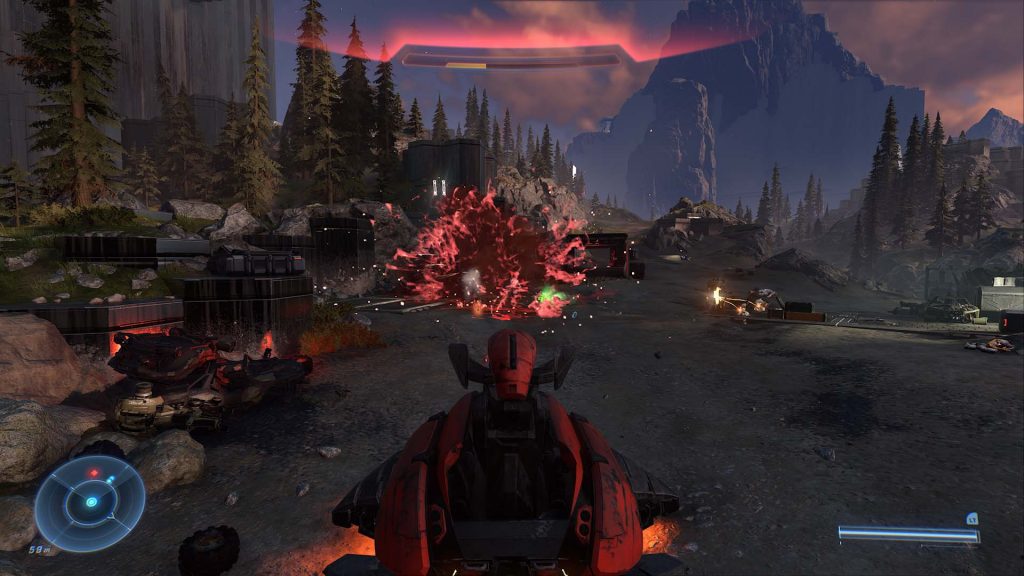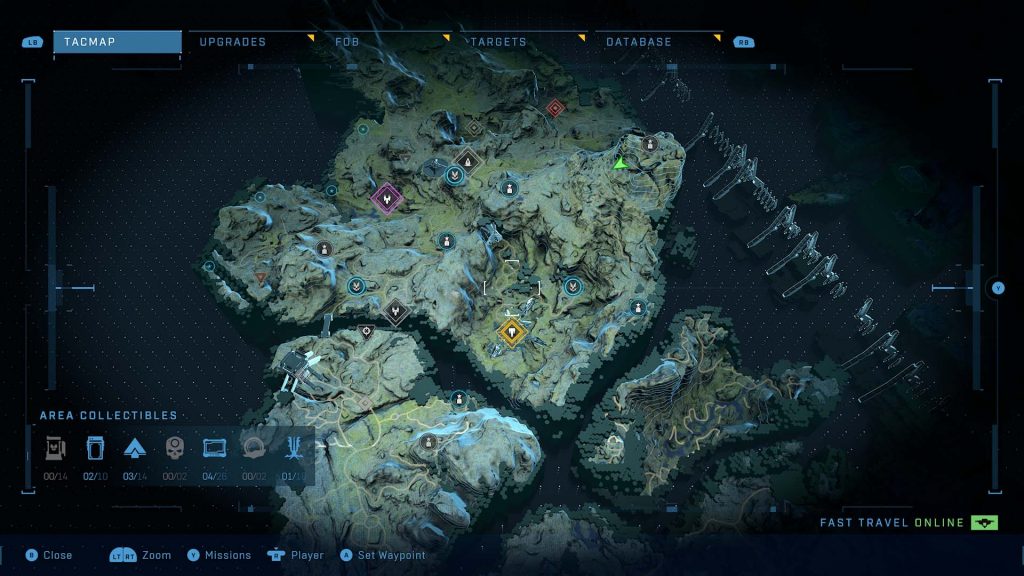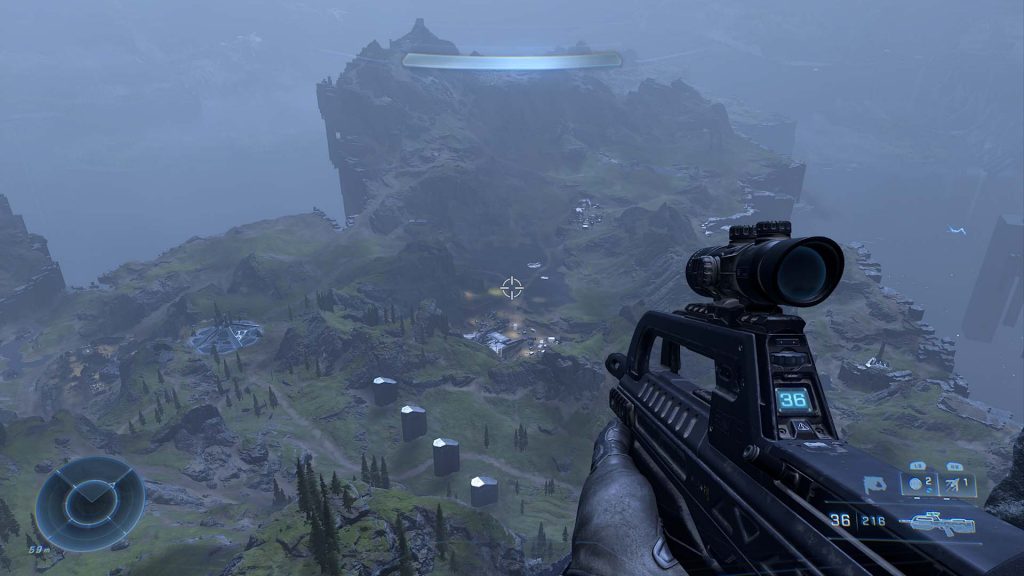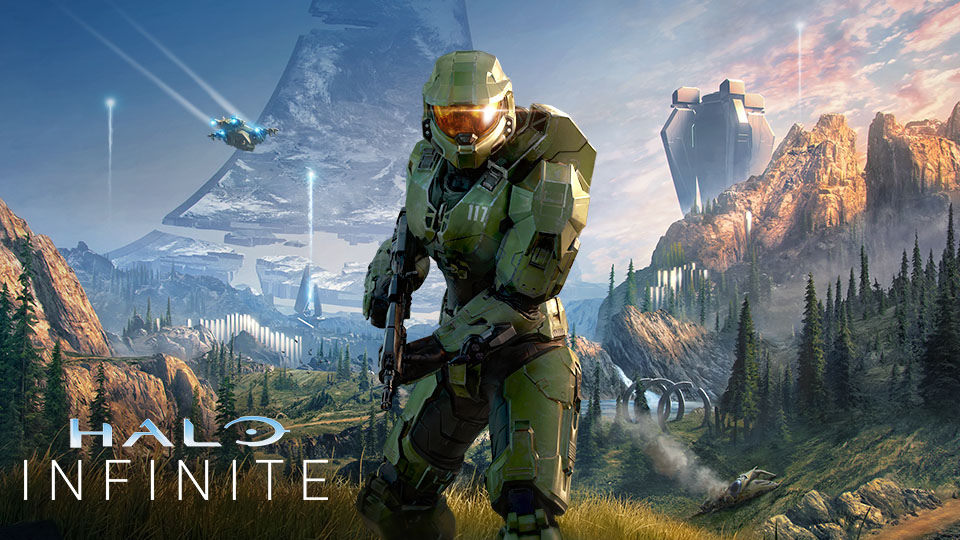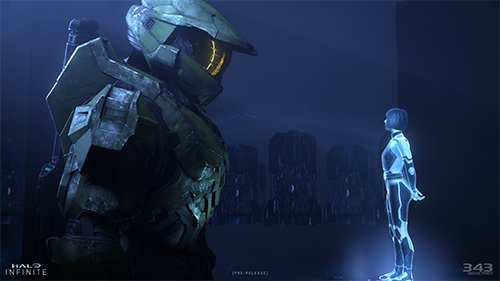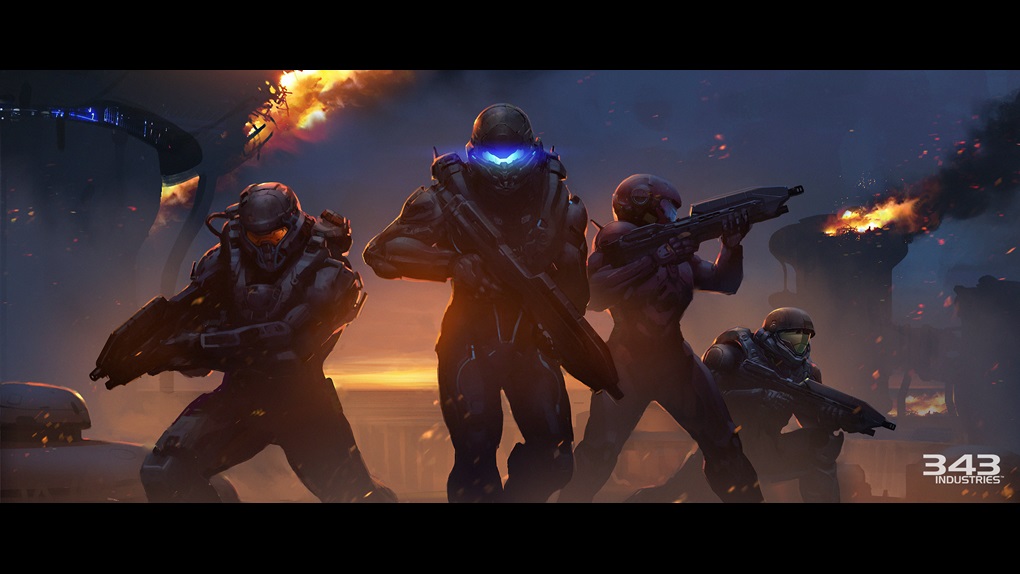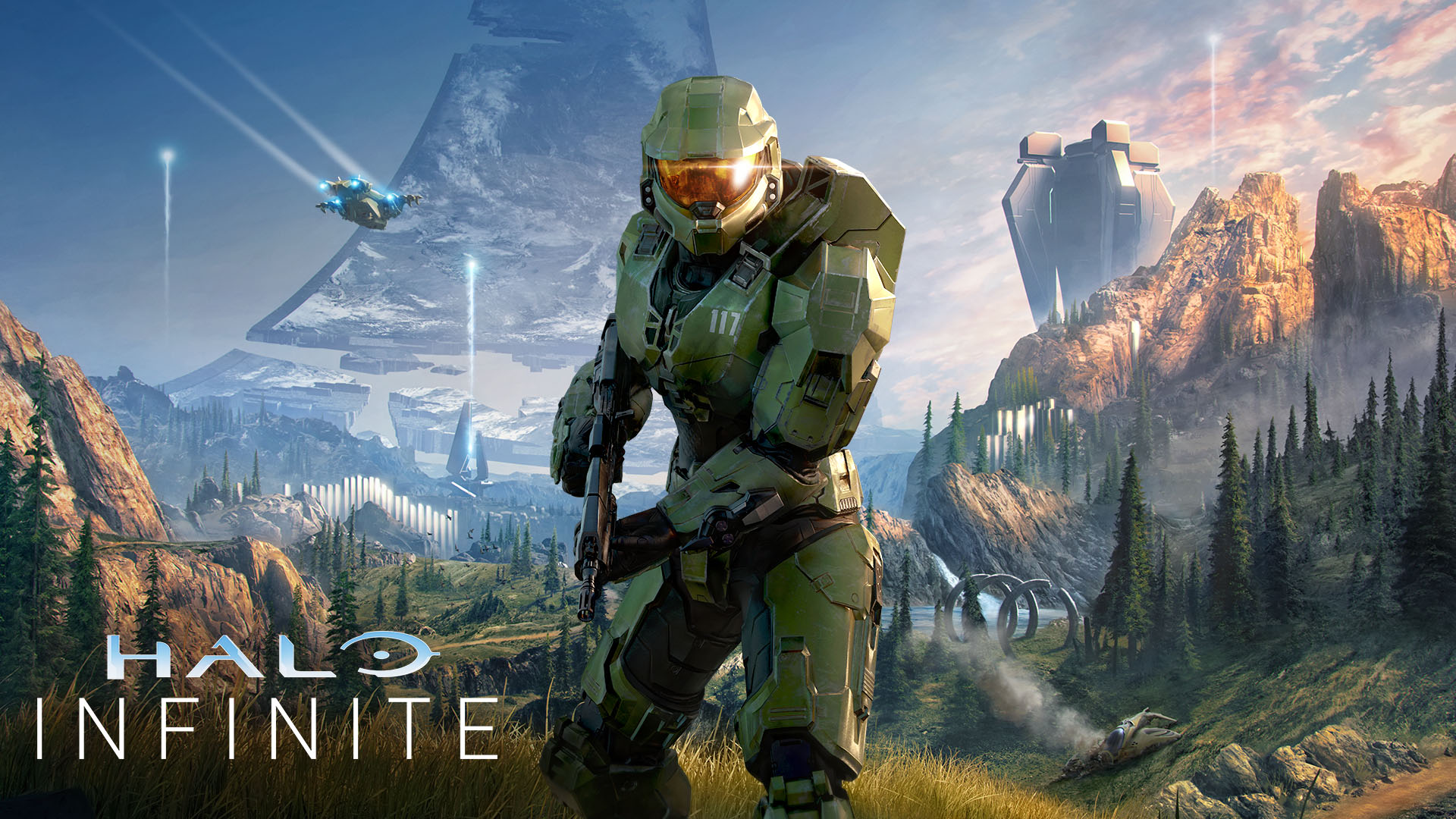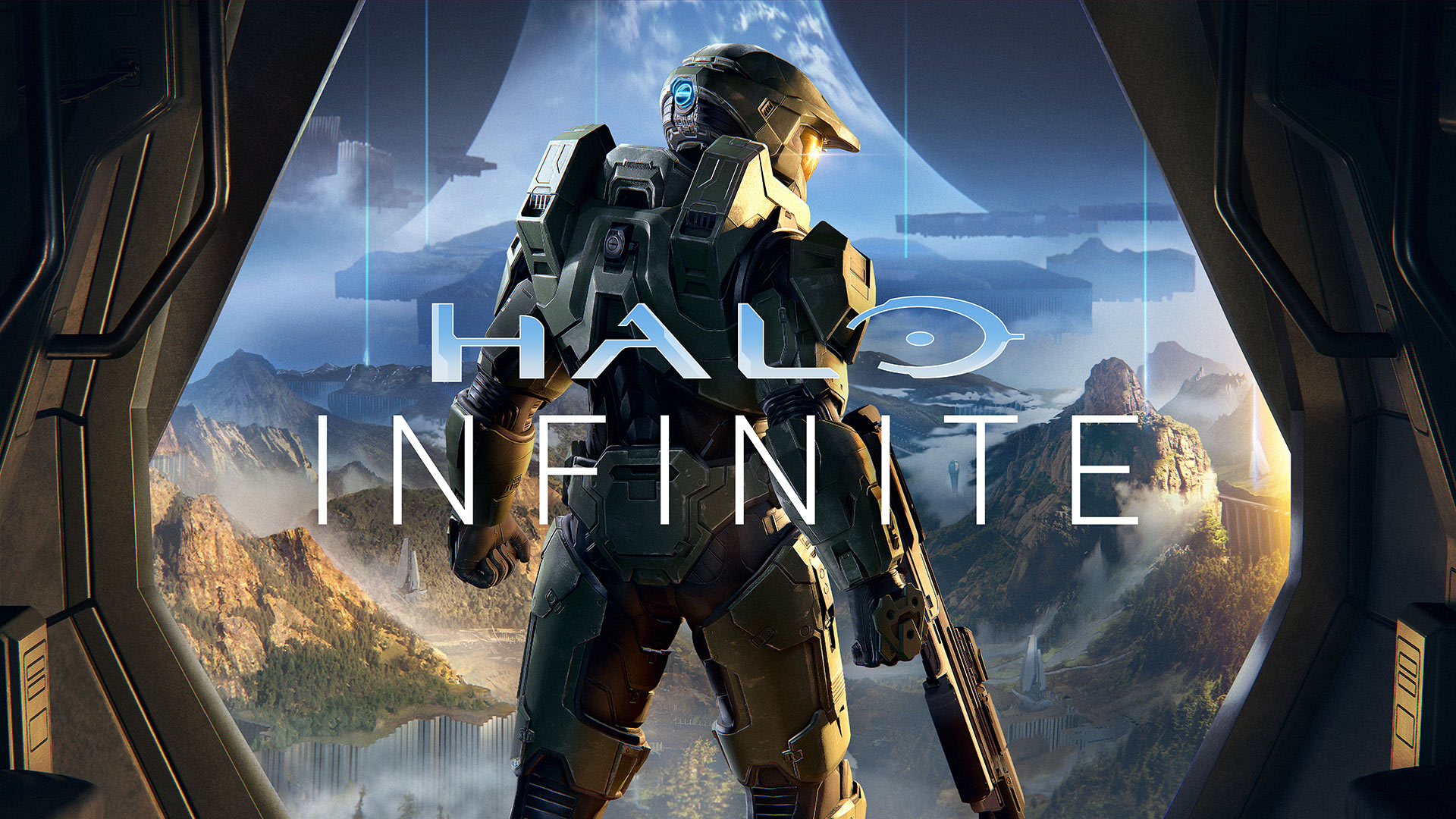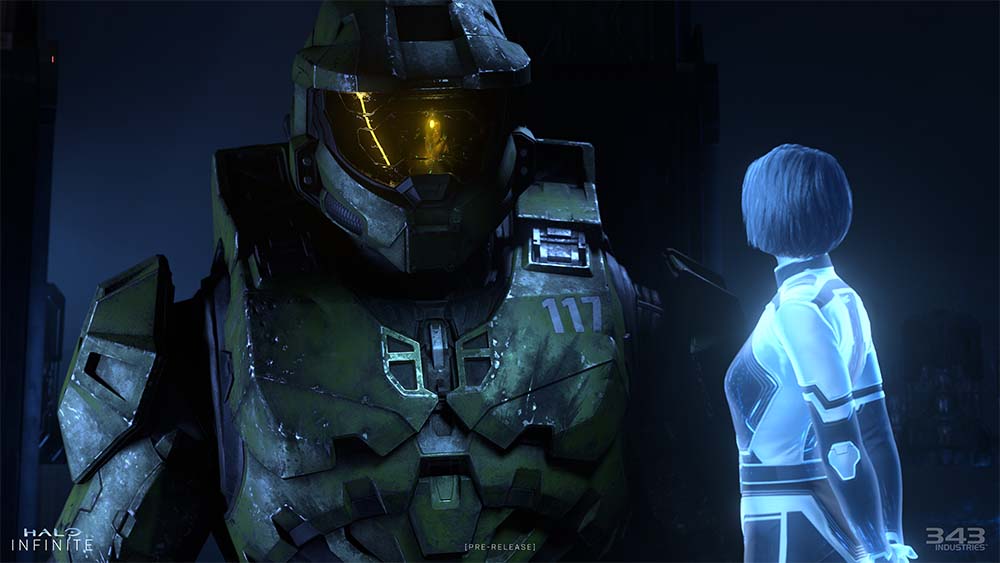
Halo Infinite‘s campaign is a return to form, which for many fans, is all it had to be after the mixed reception of Halo 5: Guardians. That game, which swapped out series’ protagonist Master Chief for new player character Locke, also doubled down on expanding a new story arc concerning ancient Forerunner technology and villains, as well as a notable heel-turn by the previously heroic AI Cortana. There was a lot going on crammed into a brief campaign that also somehow left you feeling as if not much had happened at all. Halo Infinite‘s campaign does everything it can to reset the series back to the basic elements which 343 Studios’ knows work.
The good part of this is that Halo: Combat Evolved was iconic for a reason, and building a game around its combat loop and atmosphere, particularly from missions like ‘The Silent Cartographer’, not only hits the nostalgia button hard but provides simple and super addictive gameplay. I’ve played through the campaign twice now – due to the review copies of Halo Infinite resetting progress before release date – but the second playthrough actually felt significantly more enjoyable than my initial time with the game.
While Master Chief has a somewhat limited arsenal of tools this time around (with no dual wielding, and some only intermittently useful gadgets like a threat detector and drop cover), the main game-changer is his grappleshot. This arm-mounted grappling hook redefines Chief’s mobility around the battlefield, opening up a ton of new possibilities in combat encounters, as well as just general traversal. Rooms can be glided past with deft grappling to avoid enemies all together, baddies can be stunned-then-slammed into by grappling onto them, and weapons can be brought to Chief from across the room.
Having a more instinctual knowledge of Chief’s abilities, and the array of weapons on offer here (which range from standard bullet-based Earth fare, Covenant plasma weapons and a better selection of Forerunner ‘hardlight’ guns), makes for an incredibly rewarding experience as you clear out camps and strongholds filled to the brim with Covenant enemies. Halo has always been at its best when it’s just one Master Chief empowered against an entire army, and while occasionally you can get help from scattered UNSC support in Halo Infinite, by and large you’re on your own to figure out how to take out hundreds of Covenant with just little old Chief – and it feels great getting the best of them. A new addition, a score of mini-bosses with individual HP bars, also add a little spice to the usual proceedings.
Halo Infinite expands the Halo formula into a reasonably-sized open world, which offers plenty of opportunities to explore and upgrade the Master Chief to better prepare for encounters. Spartan Cores can upgrade his abilities in a limited skill tree, while taking out high-value targets can unlock unique weapons at ‘Forward Operating Bases’ you can fast travel between. While you can focus on just the story missions and get by fine with what you’re able to find, fully exploring the world and unlocking everything you can does pay dividends when it finally comes time to take on some of the larger Covenant strongholds.
The open world itself, a small section of the partially-destroyed Zeta Halo, has plenty of points of interest to explore, but does suffer from a fair amount of repetition. While enemy types and combinations vary, you’ll be invading a lot of similar looking Covenant bases, with similar looking rooms and generators to destroy. While there are some fun challenges within this framework, it often feels like you can see the level creator behind their design, placing ‘Covenant Building Type A’, followed by ‘FOB Type B’. This holds true for many of the game’s story missions as well, which often take place in subterranean Forerunner installations on the Zeta Halo, with rooms which repeat several times within a level, before popping up in future ones yet again. There’s also a real lack of memorable spectacular moments, which were strewn throughout previous games. There’s no big assault on a Scarab tank, or escort of a UNSC crawler, which contributes to the game feeling smaller in scope.
Perhaps most surprising about Halo Infinite is how unambitious its story is, given the title. This game is meant as a base for future Halo content, so I suppose further drama is on the way, but as it stands the narrative is pretty small-scale and somewhat confusingly executed. Following Halo 5‘s events, Master Chief finds himself on the Zeta Halo, a Halo which we’re told is different but not explicitly why, trying to stop a division of the Covenant who have taken it over, the Banished. The game’s opening sets up the stakes quite well, as Master Chief is handily beaten by the Brute Atriox, being tossed out into space like an astronaut’s leavings. You would think that this sets the stage for a re-match between the Chief and Atriox, but the rest of Halo Infinite instead concerns itself instead with Atriox’s lieutenant and his lackeys.
It feels like you’re not really tackling the core issue presented by Halo Infinite‘s premise, a feeling driven home by your constant encounters with the Banished’s mysterious activities on the Zeta Halo which promise to lead to something big – maybe – possibly, in a future expansion or game. Outstanding plot threads from Halo 5 are eventually addressed, but never in a really satisfying way that would justify that game’s existence.
What works better throughout the game’s story are the core trio of characters – Master Chief, his pilot Echo-216 and AI companion, Weapon. Master Chief gets plenty of good dry jokes in about yet another Halo with yet another cataclysmic threat, but aspects of his personality also bounce well off his compatriots. Where Chief is steadfastly optimistic and committed to his mission, Echo-216 is defeatist and panicked. Where Chief is world-weary, Weapon is innocent and a fresh set of eyes. The interplay between them works, and helps to flesh out Master Chief in ways that older games never quite managed.
As I noted in my review-in-progress, the sound design in Halo Infinite is outstanding, with killer effects for all the weapons, vehicles and atmosphere on the Halo itself. Visually, Halo Infinite is very clean and generally quite stable, with only occasional freezes on the final retail build when restarting the game via Quick Resume, or when the game appeared to be having trouble loading during a heavy battle. It can be a little worrying, but only once did a freeze crash the Xbox itself requiring a restart.
Halo Infinite has a superb core combat loop that harkens back to the original Halo: Combat Evolved, with a great arsenal of weapons and so many movement possibilities opened with the grappleshot. With those tools alone, there’s a huge amount of fun to be had in Halo Infinite‘s campaign, despite the fact that the open world can feel repetitious, and there’s a general lack of ambition in the storytelling at present. I expect in future Halo Infinite will indeed expand, infinitely I suppose is the point, where it will become more epic in scope. However, what’s here forms a fine base for a more open take on the Halo formula, that offers a genuinely fun FPS sandbox to tool around in.
-A beautiful distillation of what makes Halo's combat great, with a fun core gameplay loop -Open world provides plenty of opportunities for neat emergent moments -Master Chief's laconic sense of humour and chemistry with his compatriots is very endearing
-Repetitive elements both in the open world, and the way story missions are structured -Despite being open world, the campaign feels scaled back with fewer memorable spectacular moments than past games -The story feels more like a prologue to a game that never comes, and an extended clean-up of a previous game that wasn't particularly liked

